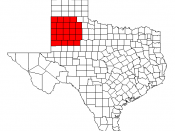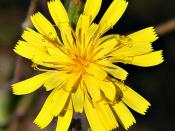There are many similarities and differences in a state as large as Texas. The state is divided into 4 geographic regions: Mountains & Basins, the Great Plains, the North Central Plains, and the Coastal Plains. Even in these regions there are enough differences for subdivisions. The Great Plains is divided into the Llano Basin, Edwards Plateau, and the High Plains. The North Central Plains is also divided into 3 sub-regions: Grand Prairie, Cross Timbers, and Rolling Plains. The Coastal Plains includes the Piney Woods, Post Oak Belt, Blackland Prairie, Gulf Costal Plains, and the South Texas Plains. Only the Mountains & Basins Region is not subdivided. There will be the comparing of the Mountains & Basins to the Great Plains and the North Central Plains to the Coastal Plains.
North Central Plains vs. Coastal Plains.
The North Central Plains is made up of three sub regions. These are the Grand Prairie, Cross Timbers, and the Rolling Plains.
The Coastal Plains is divided into five sub regions. The Piney Woods, Post Oak Belt, the Blackland Prairie, Gulf Coastal Plain and the South Texas Plains are the sub regions of the Coastal Plains.
The Coastal plains has two more sub-regions than the North Central plains Region. The North Central plains has higher elevations than the Coastal plains. The Gulf Coastal Plains go from below sea level to 1000 feet above sea level. The North Central Plains elevation ranges from 800 to 2000 feet above sea level. The Coastal plains is bigger in size. More people live in the Coastal plains, because of where it is located. The Coastal plains has hundreds of thousands of trees and the North Central plains has very few of them. The Coastal plains is next to the Gulf of Mexico. The Coastal plains soil is sandy...


